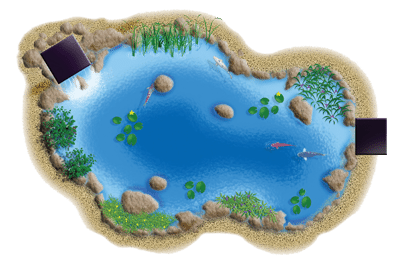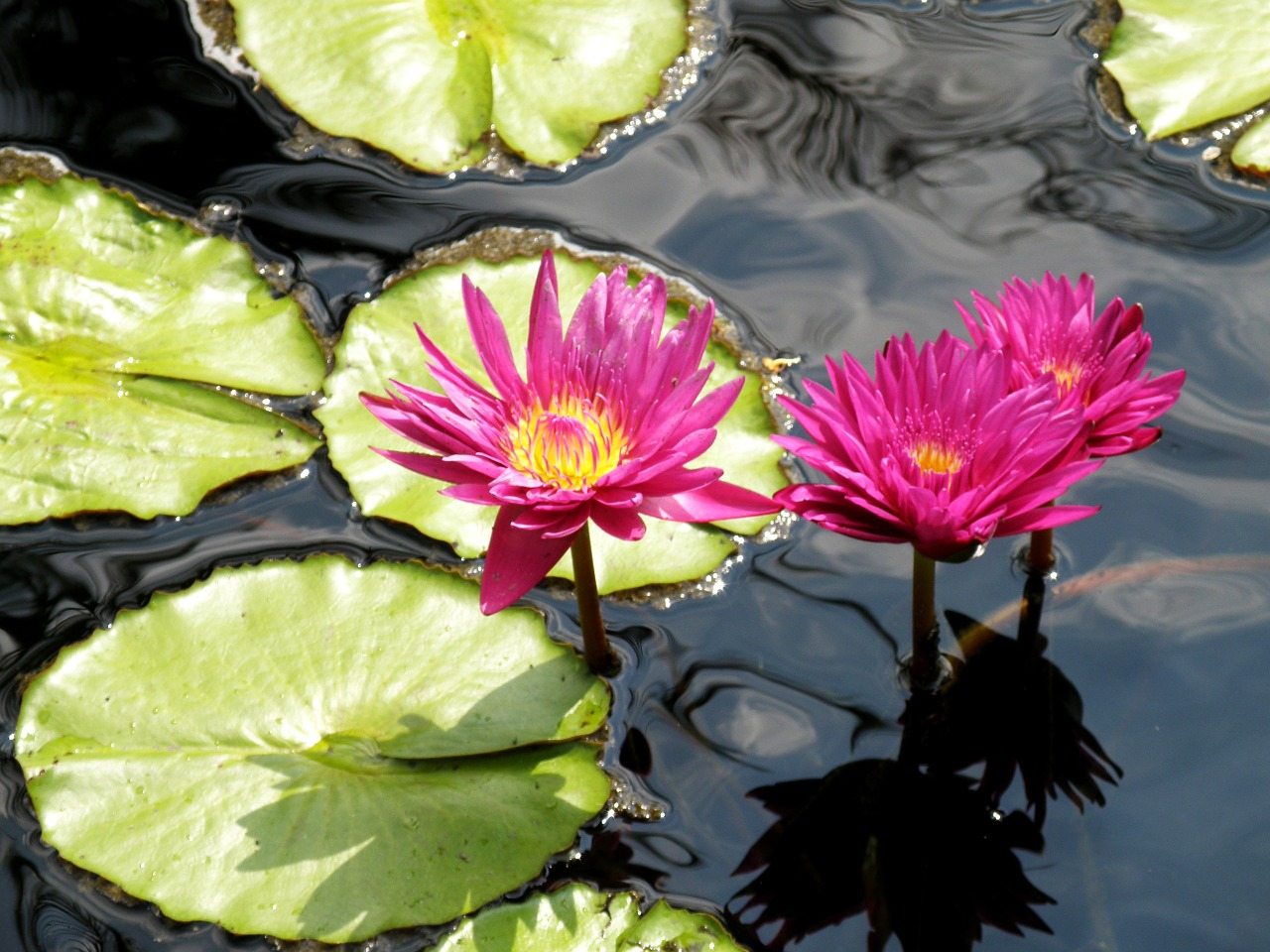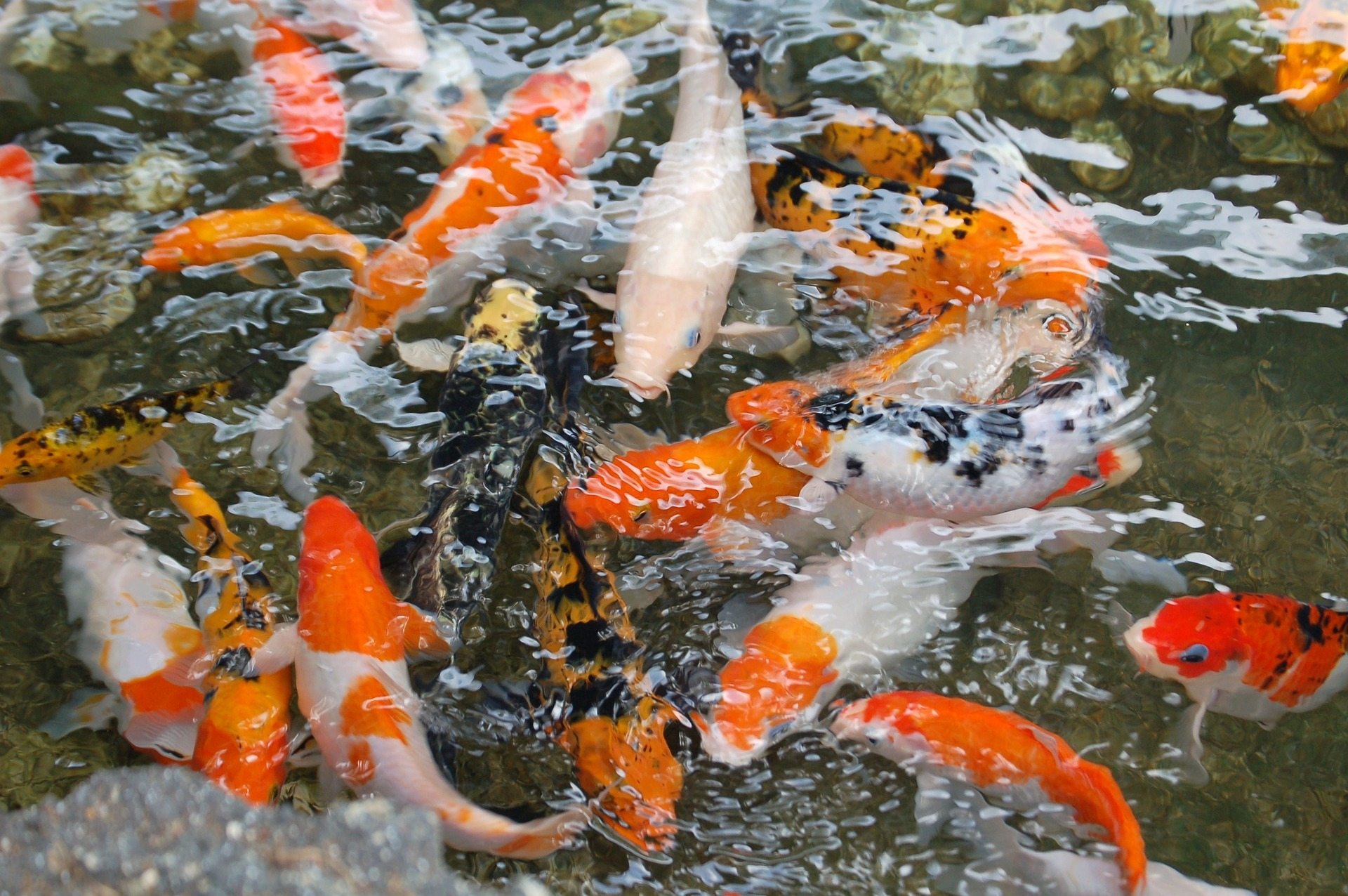The 5 Part Recipe to Pond Success!!!
The 5-Part Recipe
The five parts of a beautiful pond recipe are the foundations of an Aquascape Ecosystem Pond. Not only are the five elements the cornerstone of an ecosystem pond, understanding how and why they go together is the basis for successful pondering.
1 Rocks & Gravel:
Sometimes controversial in the pond community but a huge difference maker. Have you ever been to a quarry pond thats all rocks and gravel? They always have crystal clear water. A properly rocked and graveled pond has several healthy benefits. It protects the liner from UV light which over time breaks down the pond liner. It protects the liner from animals and their nails and significantly reduces the amount of muck build up in the bottom of the pond. This is because rocks and gravel provide many places for bacteria to colonize and call home. Much more than a bare liner, concrete or smooth pond. More bacteria means there is more capacity to breakdown fish waste and plant debris leading to a better water quality. The large amount of surface area both on the surface of the biological filter media, as well as the rocks and gravel inside the pond allows for the colonization of beneficial bacteria that are responsible for the nitrification process. This changes ammonia to less toxic forms of nitrite and the usable form of nitrate.
With the regular addition of beneficial bacteria such as Aquascape Beneficial Bacteria for Ponds helps support the reduction of ammonia. By using rock and gravel on the pond’s floors and sides, and adding beneficial bacteria to supplement its growth, rocks and gravel become a vital part of lowering a pond’s maintenance.
2 & 3 Plants & Fish:
 The plants and fish you put in a water garden are also vital to its overall health and function. Besides greatly adding to the pleasure of owning a water feature, plants and fish have a symbiotic relationship that when kept in balance, are part of the beautiful pond recipe. Fish consume algae and insects that inhabit a pond, and your aquatic plants use fish waste as fertilizer to grow. Keeping the right amount of fish and feeding them properly will contribute to the lower maintenance of an ecosystem pond. Aquatic plants also absorb the nutrients from the water that contribute to algae growth. A pond filled with lush aquatic vegetation will be much less likely to accumulate algae than one void of plants or fish for that matter.
The plants and fish you put in a water garden are also vital to its overall health and function. Besides greatly adding to the pleasure of owning a water feature, plants and fish have a symbiotic relationship that when kept in balance, are part of the beautiful pond recipe. Fish consume algae and insects that inhabit a pond, and your aquatic plants use fish waste as fertilizer to grow. Keeping the right amount of fish and feeding them properly will contribute to the lower maintenance of an ecosystem pond. Aquatic plants also absorb the nutrients from the water that contribute to algae growth. A pond filled with lush aquatic vegetation will be much less likely to accumulate algae than one void of plants or fish for that matter.
4. Mechanical & Biological Filtration:
Filtration is a vital and necessary piece of any ecosystem pond. A mechanical filter, like a pond skimmer, is necessary to capture wind blown debris before it sinks to the bottom of the pond and possibly overloads the system. Biological filtration, usually handled with an external source, allows the pond’s water to flow through, creating additional biological capacity to that already in the pond, which will break down the harmful waste. By properly handling surface debris and having the right amount of biological filtration for the pond’s needs, your ecosystem pond will function at its optimal levels.
5. Recirculating System, Pump, & Plumbing:
Not only do you need the right sized pump, but you also need the proper sized pipe to handle an ecosystem pond’s recirculating needs. The entire body of water should be circulated a minimum of one time per hour to properly function. Not only does moving the water in an ecosystem pond draw surface debris to the catch area in the skimmer, it passes the water through the biological filtration material where the bacteria can do their job. Getting the water flow back into the pond over rocks aerates it, adding oxygen back into the water.
Every pond is unique and there are lots of variables but one thing is for certain, you will have success when you implement the 5 ingredients in the Pond Recipe –rocks and gravel, fish, plants, filtration, and recirculation.


















